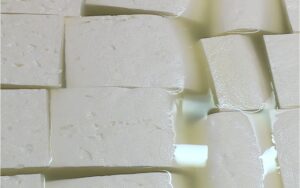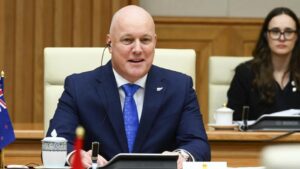
Continued development of large-scale dairy farms and falling feed prices are driving China’s raw milk production up and the official price down.
China’s purchasing of foreign dairy commodities is reducing and the demand for imported infant formula is impacted by a lower birth rate.
New Zealand’s Ministry for Foreign Affairs and Trade (MFAT), in a market intelligence report from the embassy in Beijing, says NZ infant formula exports to China in the four months to end April were $410 million, a nearly 17% decrease on the same period last year.
However, the drop comes against a high base in 2023 when NZ companies were fast out of the gates meeting China’s new infant formula registration requirements.
The increase in China’s total imports of infant formula from competitors show they have now caught up.
Trade data also points to a 31% reduction in China’s total imports of infant formula in the year ended April 2024.
“The drop in total imports points both to the growing trust in local brands and China’s low birth rate,” MFAT’s report says.
Government-sourced data shows that China’s raw milk production grew 1% in May, year on year, following 2.3% growth in April.
“Overall the supply is still growing, although the rate is slowing down,” High Ground Dairy senior manager Stu Davison said. He is a New Zealand analyst working in Chicago.
The raw milk price is below break-even and dairy farmers in China are losing money rapidly.
The farms losing money are the independent farmers, not those farms owned and operated by processors such as Mengniu or Yilli.
“Sentiment among Chinese farmers is very low, with reports that they are culling cows and trying to feed lower-cost diets to stem their loses.”
The Chinese cost of dairy production is high, due to its reliance on mostly imported feeds such as hay and corn from the United States, so the local milk price needs to be high to support the production costs.
The much-reduced 3.23RMB raw milk price is about NZ$9/kg milksolids.
All data sources agree that production has grown at significant rates over the past four years, possibly 8.6% in 2022 and 2.9% in 2023, although there is variation in numbers from different sources.
Self-sufficiency in dairy has grown from 70% to 85% in four years, RaboResearch global dairy strategist Mary Ledman in Chicago has said.
At these low farmgate milk prices China will quickly become a major exporter of dairy and will bring a shift in international trade dynamics, chief executive Fabrizio Jorge of Beston Global Food Co in Melbourne has warned.
Regarding infant formula demand, Davison said the growing acceptance of local products goes alongside a push for “Breast is Best” in China, similar to what is happening in other nations.
The infant formula market in China has also been changed by the new labelling requirements and that has created a lot of noise in the data.
NZ supplied 27.6% of the market for imports year to date April 2024, versus 34% from the Netherlands.
But the new regulations have hit European products harder than NZ ones.
The Netherlands and France are down 50% year to date, Ireland down 25% and NZ 20%.
Nearly 60% of NZ infant formula exports go to China.
“The free trade agreement should support NZ product having an upper hand over European product.
“We are seeing the same trend for other dairy products, where even though China is importing less dairy overall, which is definitely impacting dairy prices, NZ is claiming a larger market share.
“The FTA makes NZ product more attractive, as it is cheaper than paying the extra tariff for EU product,” Davison said.








